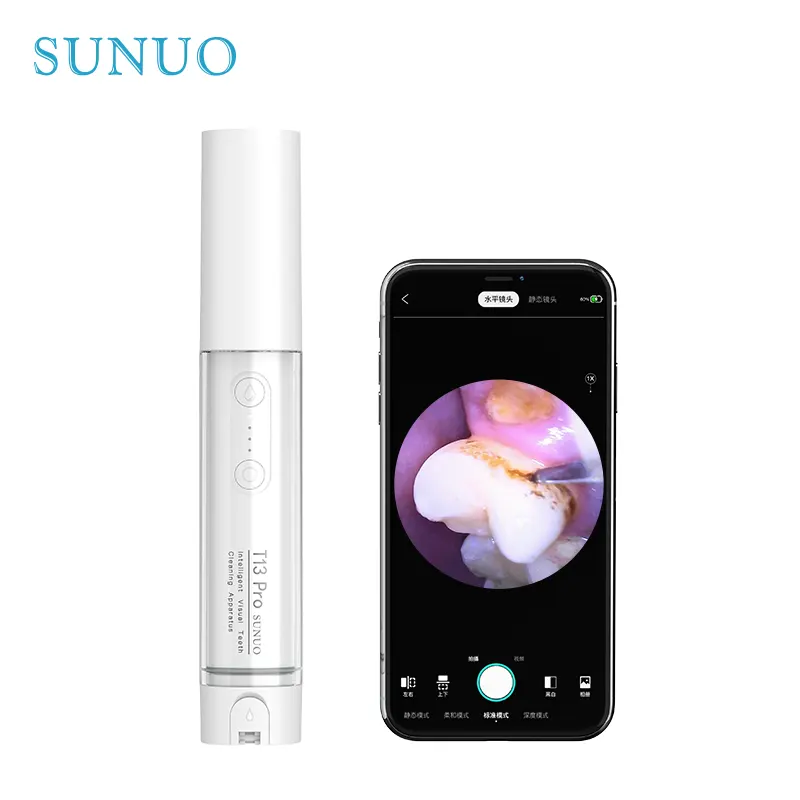- English
- שפה עברית
- Bosanski
- Punjabi
- O'zbek
- Español
- Português
- русский
- Français
- 日本語
- Deutsch
- tiếng Việt
- Italiano
- Nederlands
- ภาษาไทย
- Polski
- 한국어
- Svenska
- magyar
- Malay
- বাংলা ভাষার
- Dansk
- Suomi
- हिन्दी
- Pilipino
- Türkçe
- Gaeilge
- العربية
- Indonesia
- Norsk
- تمل
- český
- ελληνικά
- український
- فارسی
- தமிழ்
- తెలుగు
- नेपाली
- български
- Latine
- Қазақша
- Azərbaycan
- Slovenský jazyk
- ქართული
- Română
- Slovenski
- मराठी
- Srpski језик
- Hrvatski
- Eesti Keel
Is It Okay to Scrape Plaque off teeth with A Plaque Remover?
2024-05-22
Using a plaque remover at home can be tempting for those looking to maintain their oral hygiene between dental visits. However, it is essential to understand the risks and proper usage of these devices to avoid potential damage to your teeth and gums.
A plaque remover is designed to aid in the removal of dental plaque and calculus, which can accumulate on the surfaces of teeth and lead to various oral health issues, including gum disease and tooth decay. Modern plaque removers often come equipped with advanced features such as ultrasonic functions, smart sensors, and WiFi connectivity, making them more effective and user-friendly.
The ultrasonic plaque remover is particularly popular due to its high efficiency. With the capability of 2 million vibrations per minute, it can easily crush and remove dental calculus. These devices typically have smart sensors that automatically start cleaning when the cleaning head touches the teeth and stop when it touches the gums, thus protecting the delicate gum tissue. Additionally, the ability to adjust between three different levels or modes ensures a comfortable user experience.
Despite the advanced technology in today's plaque removers, there are still important considerations to keep in mind. While using a plaque remover at home can be beneficial for maintaining oral hygiene, improper use can lead to several problems:
Gum Damage: Even with smart sensors, there is a risk of damaging the gums if the device is not used correctly. Overzealous scraping or using the wrong setting can cause gum recession or irritation.
Tooth Enamel: Aggressive scraping with a plaque remover can damage the enamel, the protective outer layer of the teeth. Enamel damage is irreversible and can lead to increased sensitivity and vulnerability to cavities.
Infection Risk: Without proper sterilization, using a plaque remover can introduce bacteria into the mouth, potentially leading to infections.
To mitigate these risks, it is crucial to follow the manufacturer’s instructions carefully and use the plaque remover as intended. Additionally, consulting with a dentist before incorporating a plaque remover into your oral care routine is highly recommended. A dentist can provide personalized advice and ensure that the device is suitable for your specific dental health needs.
Modern plaque removers often come with WiFi connectivity, allowing users to connect the device to their smartphones via an app available on iOS and Android platforms, such as Google Play. This connectivity enables real-time monitoring and guidance, making the product easier and safer to use. Users can adjust settings and track their oral hygiene progress, ensuring they are using the plaque remover correctly.
In conclusion, while it is generally okay to use a plaque remover at home for maintaining oral hygiene, it must be done with caution and under the guidance of a dental professional. The advanced features of modern plaque removers, such as ultrasonic cleaning, smart sensors, and WiFi connectivity, make them highly effective tools when used correctly. Always prioritize safety and consult with a dentist to avoid potential risks and ensure the health of your teeth and gums.




